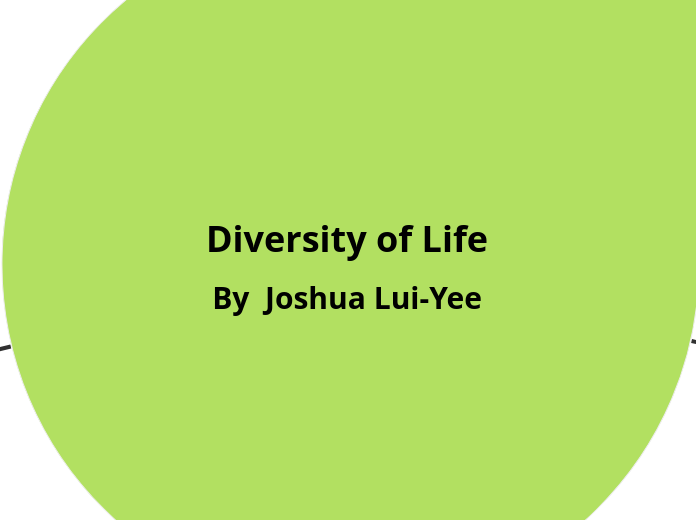Diversity of Life
By Joshua Lui-Yee
Evolution
Genetics:
Subtopic

Populations Genetics and Evolution:
Populations
units of evolution
genetically evolve
group of organisms
interbreed in the same region
A gene pool
alleles
genes
population
^
Microevolution:
change in alleles over time
genetic diversity increases
different characteristics and alleles
Hardy-Weinberg Equilibrium:
a population can follow conditions
in accordance with the theory
random sexual mating
large population size
isolation from other species
no mutation
no natural selection
same allele population
no genetic diversity
no diverse offspring
same gene pool
not in accordance with the theory
non-random mating
genetic drift
gene flow
mutation
natural selection
changing allele population
genetic diversity
gene pool
diverse offspring
Natural Selection:
change in allele frequencies
specific genotype advantages
a survival advantage
larger gene pool
diverse offspring
variation of traits among organisms
overproduction of offspring
struggle for existence
different rates of surival
selection
Alleles
Mutated genes (ie. green eyes vs blue eyes)
after meiosis
cells with the same genes and locus, but varying alleles
genetically different
sexual reproduction
alleles from each parent
increases diversity of traits and characteristics
Reproduction
Gametogenisis
Oogenisis
egg cells (ovem
Spermatogenisis
sperm cells
Sexual Reproduction:
Gamete formation
Sperm and egg unite
Embryo forms
offspring recieves alleles from each parent
increases genetic variation
Mendel Laws of Genetics:
Mendel's Law of Dominance
a heterozygous organism
1 expressed allele
alleles must be recessive or dominanat
dominant alleles will be revealed over recessive
Mendal's Law of Segregation
alleles segregate during anaphase
each gamete gets 1 allele
^
increased variation in traits
increased diversity in offspring
probability of alleles
dihybrid Punnett squares
genotypes and phenotypes of each allele
Mendal's Law of Independant Assortment
alleles assort of each other during metaphase 1
increased variation in traits
increased diversity in offspring
probability of alleles
monohybrid Punnett squares
genotypes and phenotypes of each allele
Non-Mendelian Patterns of Inheritance:
Incomplete Dominance
neither allele is dominant
both alleles are expressed together
creation of a new trait
increases phenotypical diversity
Complete Dominanace:
both alleles are dominant
both alleles are expressed separately
creation of a new trait
increases phenotypical diversity
Cell Cycle
Interphase:
Mitosis
cell division process
genetically identical diploid somatic cells
increase genetic variation
^
Meiosis
Note: Meiosis and mitosis both have PMAT phases, with slight differences^
^
Subtopic
create gamete cells
daughter cells recieve allele from each parent
2 phases of meiosis
Meiosis 1 (reduction division phase)
2 haploid cells
Increase genetic variation
crossing-over
metaphase 1
independent assortment
prophase 1
Meiosis 2:
4 haploid cells
genetically different offspring
increase diversity